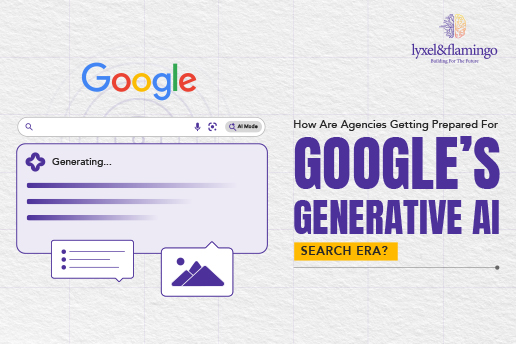Have you ever been annoyed by a link on any website that does not respond to clicks by you (even if you click multiple times), the term “rage clicking” might already be familiar to you.
This is a good situation. You can empathize with your website’s visitors when you can understand their frustration.
You can utilize rage clicks as a tool to promptly determine what to do to provide your users with a better user experience when they encounter broken elements, bugs, and usability issues on your website. We will discuss in detail how to do that in this article.
What exactly is rage click?
Rage clicks occur when visitors to your website click repeatedly (and again) in one location or on a certain component of the website over a brief time period. Knowing what triggers click rage can aid you in optimizing your page for conversions, as generally, rage clicks indicate the annoyance of the website visitor over broken elements, confusion, and slow page performance.
In-person usability testing or behavior analytics software features such as session recordings can detect rage clicks.
The main line is client’s mouse slamming is an indication that something is wrong. Though people sometimes click repeatedly out of habit, rage clicks can signal the frustration of the visitors and may be a sign that something is wrong with your website, such as poorly loading pages, broken interactive elements, or dead links. This can aid you in finding ways to enhance user experience (UX).
Repeated user clicks can sometimes be a sign of poor UX, but they can sometimes be something else absolutely. Therefore, it is crucial to know what you are looking for.
As mentioned above, ‘rage clicking’ is done by some individuals habitually while they scan or read a web page, and it is likely that they are not clicking due to frustration or anger. We refer to these rage clicks as false positives.
Rage clicks, on the other hand, can provide actionable insights into the nature of the problem or motivate you to delve further into the digital experience.
Putting anger clicks into perspective can enable you to have a better understanding of the bigger picture and what is actually going on with your website. Using a tool like session recording can be the simplest way to track rage clicks.
What exactly do rage clicks mean?
It is usually a clue that something is amiss in the UX if there is a lot of rage-clicking in an app, website, or any other user interface. Several causes can be:
Deceptive UI elements or text
UI design choices that have become more and more popular are few. A few of them have progressed to the point of transforming into accepted design conventions. For people who are habituated to things working in a specific way, deviating too much from these traditions can lead to confusion among the visitors. For instance, since the underlined text is commonly given as a link, users would try to click on it. If there is an underlined text that has no clear path, the user’s expectations and experience will not match, and that would cause a rage click to occur.
Low feedback and slow replies
When a user taps or clicks on a component and does not promptly receive any feedback, it might trigger rage-clicking as the user needs to make sure that the click has worked. In such a situation, there is a need for the users to see a proper message about loading or any other visual cue. This will comfort them by letting them know that their activity has an impact.
Broken components, dead links, and errors
Visitors are prone to get irritated if a normally interactive component stops functioning. It is crucial to check that the links and elements are functional and up-to-date.
Headings that are unclear or misleading navigation
Users expect content to be easily found. They desire to have a clear understanding of where they will land when they click on a section on a navigation bar or a heading. Navigation should be as unambiguous and clear as possible, with a classification that corresponds to the expectations of the visitor. A risk zone for rage clicks might be created by vague classification or unclear navigation categories.
When a visitor can not find any other way to reach their aim on the UI, they can rage click. What should I do next when the clicking does not work? In such situations, you might need to make some UI modifications to more clearly direct the visitors toward their aims.
How to examine rage clicks by using session recordings?
The activities made by real users while they browse the website are rendered by session recordings (also known as user recordings and session replays). Taps, clicks, scrolls, and mouse movements are captured by the recordings, and you can gain insight into how users respond to and interact with the features and components of your website.
You can detect the instances when a visitor was clicking repeatedly on a location or element of your website by using the rage clicks filter in session recordings. This will ultimately support you in identifying what alterations to make to for optimizing UX and enhance the visitor’s experience.
This is how:
Using rage clicks to enhance UX [a 2 steps e-commerce example]
Let us assume that your checkout page has seen more exit rates and a higher number of abandoned carts, and you need to understand what is actually happening so that you can know why purchases are not being completed.
You use session recordings to see how your website is being used by people and, more particularly, to observe what people are encountering on the checkout page.
1) Use URL filtering to limit your records so that you see only those users who visited the checkout page.
You will be prepared to be even more detailed after performing a few analyses of the user recording (highlighting or tagging your recordings in order to share them with your team, establishing metrics and goals, and allocating focused time to take notes and observe).
2) To see only those users that rage clicked further filter the recordings
You may identify the issue when you observe and examine the recordings of visitors who rage click on the checkout page. It might be so that a payment method cannot be chosen by them, their shipping or billing details can’t be updated, or a key component is broken.
After discussing what you find with your team, you will be in an excellent position to decide collectively the kind of action you need to take: missing or broken elements, bugs, and fixing dead links on your website in order to enhance the experience of checkout for your visitors.
It is recommended that you experiment with various recording filters to guide you to see issues that are required to be corrected for the visitors.
As it has been said before, issues can be identified right away with rage clicks. However, the issues can not be revealed only by rage clicks. Rage clicks are one of the multiple tools that can be used to dive deep into the user experience.
Screen recordings can be used in tandem with incoming feedback to discover visitors who have rage clicked and there is feedback from them. From the visitor’s frustration, you can identify the confusing or broken elements on your website.
Digging deeper into user experience through a combination of rage clicks and other filters
If you have many screen recordings, chances are that you will not find all the problems your visitors might be facing through rage clicks only. Frustrated or aggressive behavior can be understood by rage clicks. However, it is better to take note of the patterns to get the bigger picture and utilize rage clicks as an element of a larger attempt to understand and improve user experience.
You can filter recordings by a set of pages or a single page and add frustration filters such as u-turns and rage clicks once you have got an understanding of the traffic pattern of your visitor through session recording, and then the places where the users are getting stuck can be pinpointed.
Filters can be combined to narrow down the recordings to pages where rage-clicking has happened and then exited or bounced before converting. For instance, when you filter by u-turns, URLs, and rage clicks, the recording session count can be brought down to a usable number.

Conclusion
An important learning opportunity is presented by the screen recording, no matter how appalling it might look to get the signs of frustrated visitors with such clarity. Generally, rage-clicking is concentrated in certain locations on the interface. This would let you focus on very particular parts of your site and understand what exactly is causing the annoyance.
You will be able to deduce actionable steps that can be taken by delving a little deeper into rage-clicking. This will help you in making the UI more accessible, intuitive, and clear. Tiny changes can make a considerable impact on the user experience. Thereafter this can translate into a big difference in your business goals and conversion rates.









